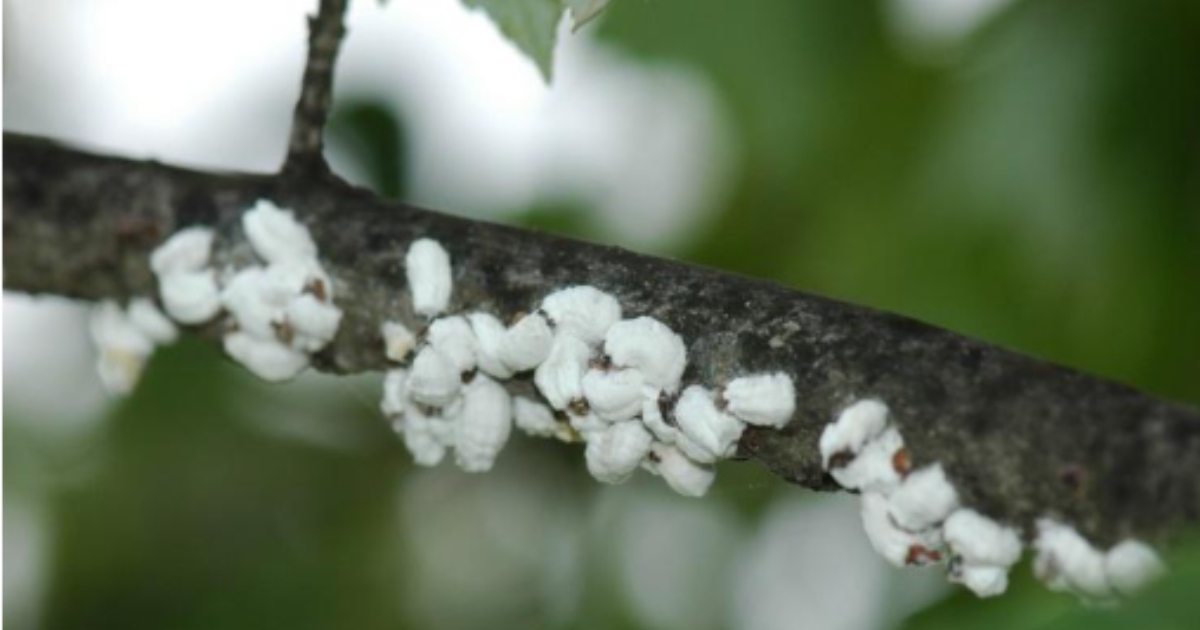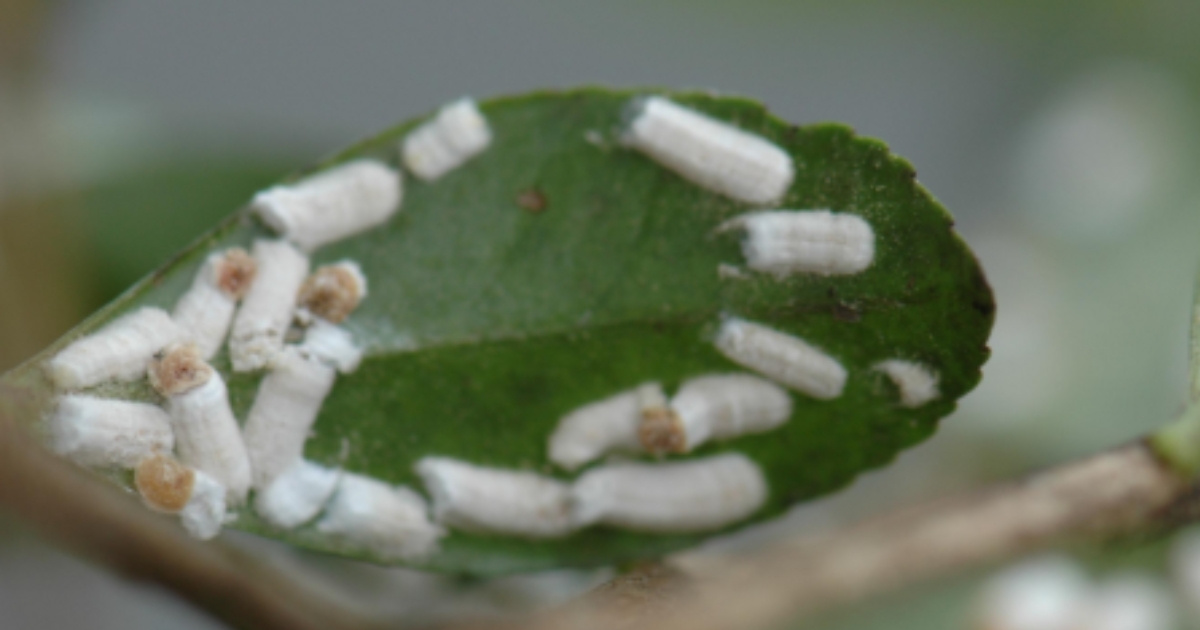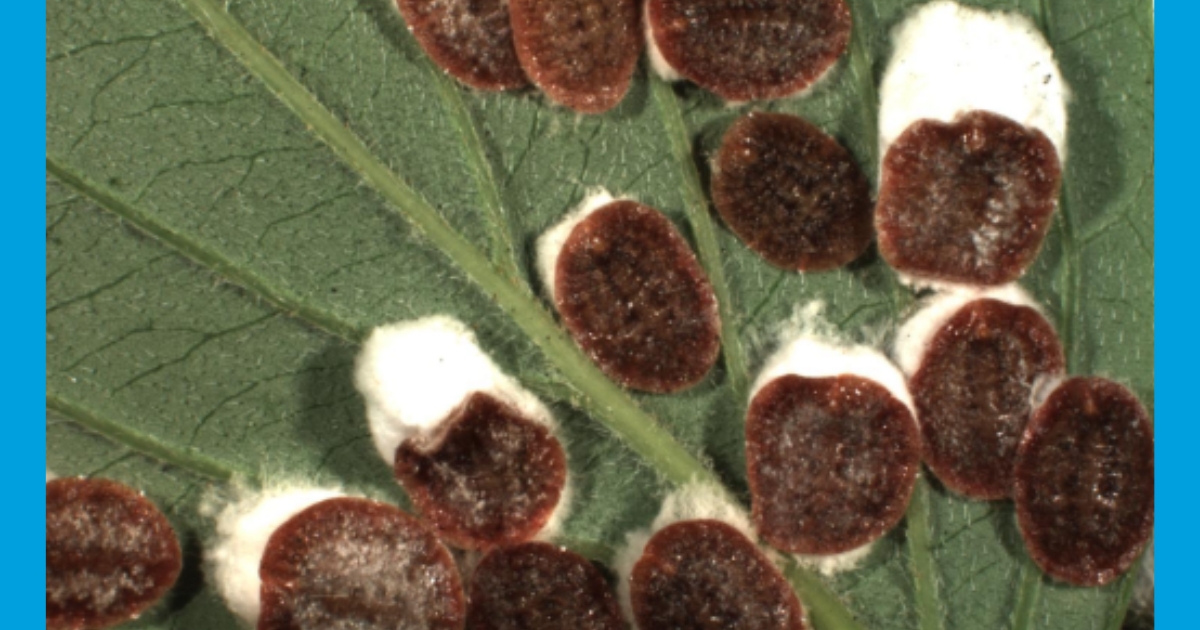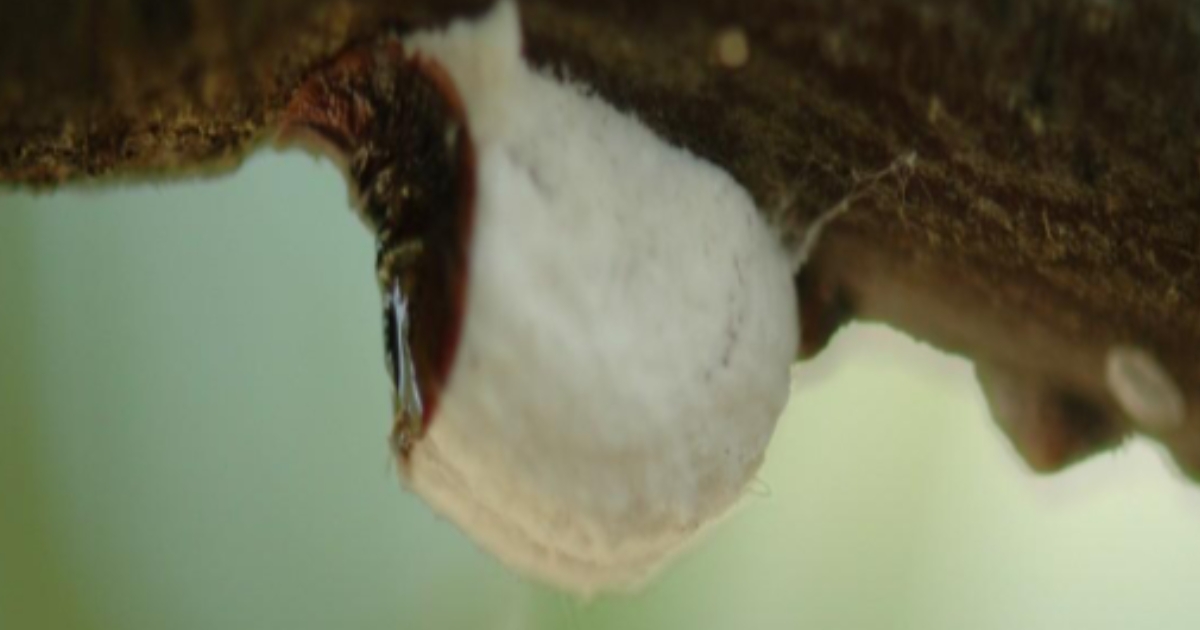
Pulvinaria Scale
Pulvinaria Scale
June 2025 | Written by: Skylar Foland and Brian Kunkel, UD Cooperative Extension Specialist
Description
Pulvinaria scale is a broad term for any species of scale in, or formerly in, the genus Pulvinaria. This includes the cottony maple scale (formerly Pulvinaria innumerabilis, now Neopulvinaria innumerabilis), the cottony maple leaf scale (Pulvinaria acericola) and the cottony camellia scale (Pulvinaria floccifera). These scales are named after the waxy white covering on their ovisacs. Their feeding may cause dieback on host trees and sooty mold growth. Cottony maple scale is frequently found on red or silver maples and cottony camellia/taxus scale is most often found on hollies in the mid-Atlantic. Cottony maple leaf scale is uncommon in our area.

Life Cycle
Pulvinaria scales hatch as crawlers in June (cottony camellia; 145 – 1,365 [830 peak] GDD50) or early July (cottony maple; 462 – 2,362 [1,388 peak] GDD50). They feed on the underside of host plant foliage until autumn. They secrete honeydew as they feed, which causes sooty mold growth. Adult males mature before autumn and mate with immature females. The immature females overwinter by retreating to twigs and stems of the host plant.
| Scale insect | Common hosts |
|---|---|
| Cottony maple | Red or silver maple, locust, oak, dogwood, linden, boxelder, others |
| Cottony camellia/taxus | Hollies, camellias, taxus, euonymous, mulberry, others |
| Cottony maple leaf | Dogwood, red or silver maple, black gum, sumac, grape, others |
The females mature and lay their eggs in spring. Cottony maple scale lay eggs on twigs and small branches, while cottony maple leaf scale and cottony camellia scale lay eggs on leaves.
The ovisacs of pulvinaria scales are distinctive and conspicuous. They are larger than both the male and female scale, at ¼ in. long. These white, cottony-looking oblong sacs can contain up to 1,000 eggs.



Biological Control
Wasps, lacewings, and lady beetles parasitize or prey on pulvinaria scales. Birds, sparrows in particular, will also attack female scales. A landscape with plant structural and species diversity provides an environment that supports natural enemies which will suppress scale populations.
Chemical Control
Chemical controls are available for controlling this pest. Low-impact pesticides, such as horticultural oils or insecticidal soap, are excellent options for controlling this scale. Pulvinaria scales are protected from most pesticides when their cover is formed, so pesticides should be applied when crawlers are active.
Please contact your local cooperative extension office for additional insecticide recommendations.
UD Cooperative Extension
This institution is an equal opportunity provider.
In accordance with Federal law and U.S. Department of Agriculture policy, Cooperative Extension is prohibited from discriminating on the basis of race, color, national origin, sex, age, or disability.
